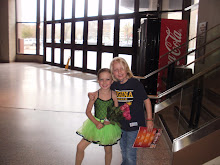
It is difficult for me to write this particular blog entry. I have just come to realize that my time in this class is almost up. I have really enjoyed my time in this class. Our discussion after we have read books has been very productive and encourages one to talk the time to evaluate what we have read and why we are drawn to certain books.
I find myself taking extra time when picking out books for not only my daughters to read but myself as well. I no longer just grab books off of the shelf. I like to take the time and flip through books. I am now looking at children's literature through the eyes of a future teacher instead of just a parent. Books that I may have shied away from in the past because of their subject matter are now ones I take extra time and review. I have discovered new genres that in the past I would not have even given a second glance too (Captain Underpants for example).
When looking at books for purchase I find myself wondering how I may make that book work or utilized in my future classroom. I believe that this is the intention of this course. As far as the blogging goes, I fully intend on keeping up on my blog as I start to work through my practicum courses. I feel compelled to express my opinions on children's literature. I have already found that this blog makes me more critical of the books I choose to read. I can only hope that any followers of this blog feel that I have helped them look at children's literature a little more closely than just the picture on the cover. Thanks for a great time.

















